Chimney Installation
The following post on chimney installation comes from Michigan State University, and offers some valuable tips and technical details on the process.
Wood Stoves
The hazards of heating with a wood stove include fires started by heat radiated or conducted by the stove, stove pipe or chimney to walls, floors and other combustible materials; fires started by sparks and glowing coals falling out of front loading stoves when opened, and fires started by flames leaking out of faulty chimneys or burning or glowing material coming out of the top of the chimney. A chimney flow reversal is also possible, leading to either flames or smoke coming out of the stove’s air inlets.
Before installing, seek advice from your stove dealer, your local building inspector or fire department. And check with your insurance agent. The insurance company may have its own specifications for installation and, since you are changing the method of heating your home, your agent must be notified in order to maintain fire insurance coverage on your home.
The National fire Protection Association (NFPA) has developed standards for clearances from walls and ceilings that are the basis for many local building codes.
All combustible materials, woodwork, unprotected walls, furniture, firewood, etc., should be no closer than 36 inches to a wood stove. A stove pipe should not be closer than 18 inches to an unprotected ceiling. These distances are important because wood that is, continually reheated will ignite at much lower temperatures than fresh wood. A new wall will start to burn at between 500 and 700 degrees F. If this wall is continually heated over a period of time the wood will dry and eventually may start to char because of radiant heat. The ignition temperature can drop to 200 to 250 degrees F. For this reason an improper wood stove installation becomes a potential time bomb.(Vis. 1) shows proper installation.
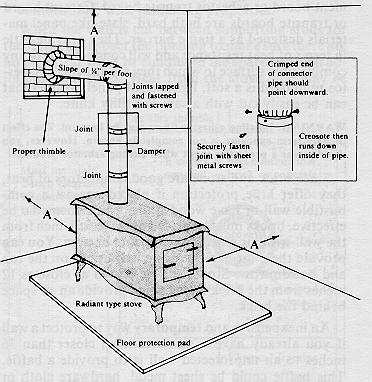
Wall Protection
A simple test will tell if you have enough clearance to an unprotected wall. Place your hand on the closest surface. If you can keep your hand there comfortably while the stove is operating, the location passes the test. If not, you need additional protection.
Spacing asbestos millboard or 28 gauge steel 1-inch away from the wall allows you to reduce the distance a stove can be placed from the wall.

These materials absorb heat radiated from the stove and the spacing lets air circulate behind the panel and cool the area between the wall and the panel. The spacers should be made of non-combustible material. A 1- to 1 1/2-inch gap between the panel and floor and at the top of the panel is necessary to provide proper air flow. Asbestos millboard is different from asbestos cement board or asbestos transite board. Cement board or transite boards are both hard, slate-like panel materials designed as a name barrier. They provide little in terms of heat resistance and will conduct heat to any combustible surface to which they are attached. Asbestos millboard is a soft, lightweight panel product that can be easily cut with a saw or utility knife.
WARNING: Inhaling asbestos fibers may be harmful. The effect of long term exposure is not completely known. However, you should wear a protective mask when cutting asbestos products.
Since brick and stone are good conductors of heat, they offer little protection if placed against a combustible wall or have wood studs behind them. To be effective, bricks must be placed out at least 1-inch from the wall with air gaps at the top and bottom. You can provide these air gaps by using half bricks on the top and bottom row. Stoves can be placed as close as 12 inches from the brick facing if you provide an air space behind the brick.
An inexpensive and temporary way to protect a wall if you already have a stove installed closer than 36 inches to an unprotected wall is to provide a baffle. This baffle could be sheet metal, hardware cloth or cement board hung on metal brackets approximately 4 inches behind the stove.
Floor Protection
All floors on which stoves are installed, except concrete, must be protected from both heat of the fire and hot coals falling out when fuel is added. Metal with asbestos backing and asbestos millboard are non- combustible materials used for floor protection. Fireproof clay tile, slate, brick, colored pebbles and marble chips can be used alone only if they are mortared in place with no gaps. If they are not mortared or have gaps, then metal or asbestos millboard must be installed between them and a wood floor. A 2-inch layer of ashes or sand or bricks laid in the bottom of the stove helps to insulate the bottom of the stove and protect the floor. In general, 18 inches is enough clearance to protect the floor if it is covered by non-flammable material, such as a sheet of 24 gauge metal or brick or fireproof clay tile. If the stove legs are from 6 to 18 inches long, 24 gauge sheet metal laid over a 1/4-inch sheet of asbestos millboard is needed. Legs of 6 inches or less require 2 to 4 inches of hollow masonry laid to provide air circulation and covered by 24 gauge sheet metal. If the stove has no legs, provide a sturdy support to allow air circulation under the stove.
The floor protection should extend at least 12 inches beyond the sides and rear of the stove, and at least 18 inches beyond the stove front, to protect against falling embers and for loading wood or removing ashes.
Before installing heavy protection materials such as brick, check the floor to make sure it can handle the increased weight. You may want to reinforce the joists under the floor. Consult a carpenter if necessary.
Stove Pipe
The stove pipe or chimney connector runs from the stove to the chimney. Many fires associated with wood stoves are caused by unsafe stove pipe installation. A safe installation requires proper material, construction clearances and does provide proper draft. A 24 gauge or thicker metal is recommended; lower gauge numbers indicate thicker metal. This gauge will provide better protection in the event of a chimney fire and will also resist chemical corrosion longer. Most stoves use either a 6 or 8-inch stove pipe. Using stove pipe that is smaller in diameter than the fire box outlet will reduce combustion efficiency and may cause improper draft.
Keep the connector pipe as short as possible. lt should not be longer than 75% of the vertical chimney height above the flue inlet (where the connector pipe enters the chimney). The maximum length is 10 feet. If the pipe runs horizontally, it should have a rise of at least 1/4-inch per linear foot from the elbow or stove outlet to the chimney inlet. Use 45″ angles to create an upward slope in the flue connector pipe. Try to have no more than one right angle turn between the stove and chimney. Additional right angle bends can cause soot and creosote to collect in the smoke pipe or chimney, blocking flue gas flow and increasing the danger of a fire.
The connector pipe diameter should be as large as the flue collar (where the connector pipe joins the stove). When joining sections of the pipe, overlap the joints at least 2 inches, with the crimped (male) end pointing down to prevent creosote drip or leak. Many house fires have resulted from stove pipe joints vibrating apart during a chimney fire. Secure each joint with at least 3 sheet metal screws. A fireproof sealant may be used in addition.
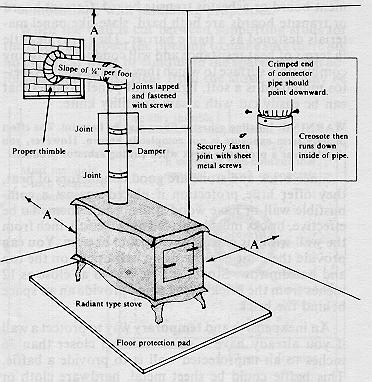
Clearances from a connector pipe must be 3 times the pipe diameter (a 6-inch pipe needs 18 inches clearance) unless the wall is protected.
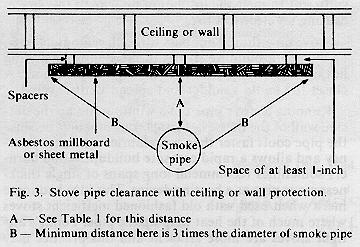
You should not pass a stove pipe through a combustible wall but if a stove pipe must pass through an interior combustible wall in order to hook up with a chimney flue, there are 4 ways to do this safely.
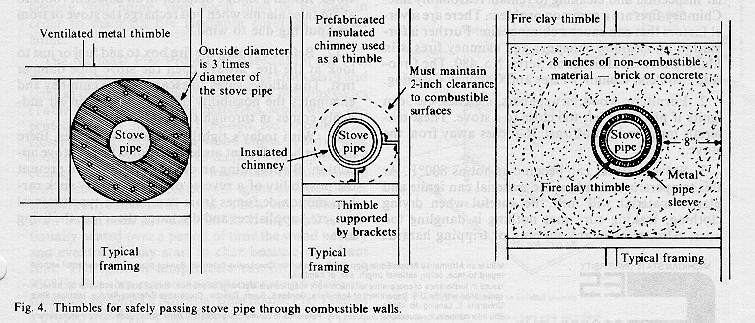
1) Use an U.L. “All Fuel” thimble extending through the wall, with a wall hole 4 inches larger than the thimble diameter. This permits the placement of an insulating material such as fiberglass or rock wool between the thimble and the wooden framing of the wall.
2) Use a ventilated thimble that is as least 3 times larger than the stove pipe. For a 6-inch stove pipe, use a thimble that is 18 inches in diameter. This type of thimble is not readily available but can be fabricated by a sheet metal shop. Ventilation through this thimble is an essential aspect of its design; the ventilating holes on either side must not be blocked.
3) Use a fire clay thimble surrounded by 8 inches of brick work or non-combustible material such as rock wool insulation.
4) Use no thimble but remove all combustible materials within 18 inches on all sides of the stove pipe. Material for closing this opening must be non-combustible, with insulating properties.
When the wall is cut between supporting studs for the thimble, inspect the opening to make sure there are no electrical wires or conduit in the space between adjoining wall studs. Heat from the stove pipe may be sufficient to melt the insulation on wire in this space, causing an electrical fire.
Stove pipe should not pass through ceilings, closets, or outside a building. Holes in the ceiling (including hot air registers) permit fires through upper floors. A closet fire could smolder and spread undiscovered.
Running a stove pipe out a window and up the outside wall of the house is a dangerous practice, because the pipe cools faster than a prefabricated metal chimney and allows a rapid creosote buildup. Wood burners sometimes recommend long spans of single thickness stove pipe as a heating device. This idea had some merit when used with old fashioned inefficient stoves where much of the heat went up the pipe. Today’s airtight stoves are more efficient and this practice may cause rapid creosote buildup.
Some stove installations require a damper either built into the stove or in the pipe near the stove to control draft and loss of volatile gases. Check the recommendation of the stove manufacturer.
When connecting the stove pipe to the chimney make sure the fitting is snug at the flue inlet. Use the proper thimble. The pipe must not project into the flue itself, since it would hamper draft.
Long stove pipes and those with restrictions should be cleaned frequently to prevent creosote buildup and possible chimney fires. The entire length of the stove pipe must be easily inspected, firmly fastened at the joints and kept free of all combustible materials. Tap your pipe to check its condition several times during the heating season and before starting the stove each year.
Additional Precautions
1. Chimney and chimney connectors require regular inspection and cleaning to remain reasonably safe. Chimney fires are a common problem. There are several factors that can cause a chimney fire.
2. Furniture, wood, newspapers, matches, etc., can ignite if placed or left too close to a stove. These materials must be kept at least 36 inches away from the stove.
3. Stove surfaces can become as hot as 800 degrees F. At this temperature, combustible material can ignite and plastic material will melt. Be careful when drying clothing, making sure that nothing is dangling too near. Also, remove any slipping or tripping hazards near the stove to reduce the risk of falling against it and perhaps suffering a severe burn. Small children must be taught to stay away from the stove. You should erect some kind of barricade around the stove if you have crawling tots who are too young to be verbally warned.
4. Never use kerosene or charcoal lighter fluids to start a fire. Also, do not burn trash in your stove. These materials lead to hot uncontrollable fires and may cause a chimney fire.
5. Keep the fire controlled with the dampers. Do not let it get roaring hot. A fire properly controlled is safer and more efficient.
6. If you want to keep your fire alive all night or when you are away from the house, bank the fire with ashes or damper it way down. Do not retire or leave home with a roaring fire going in the stove.
7. Place ashes in a lidded metal container. Because they might be hot, clean up any ashes or cinders that spill out on the floor.
8. Wear gloves when handling rough or splintery chunks of wood. If they are heavy, take care not to strain yourself or drop them on your foot.
9. You can burn wood in a coal stove, but you shouldn’t burn coal in a wood stove unless it is lined and designed for it. When you add coal to an approved stove, keep the stove pipe damper open until the fuel is burning well to avoid a potentially explosive buildup of gases from the coal. Heavily laden coal buckets can also cause strains and other mishaps if they are not handled properly.
10. Take down the stove pipe at least once or twice during the heating season and clean out the soot. Removing the accumulated soot saves fuel, increases heat and minimizes the danger of fire.
11. If you have yet to equip your house with fire warning devices, be sure to do so when you install a stove. Install a smoke detector in an adjacent room to avoid false alarms when you recharge the stove or from backpuffing due to wind.
12. Before opening the fire box to add fuel or just to look at the fire, always open the stove pipe damper first. This allows gases to escape up the chimney and eliminates the possibility of “flare up” when air suddenly comes in through the door.
13. With today’s tightly-constructed houses, there may not be sufficient air leakage for efficient stove operation. By providing an outside air inlet, you prevent the possibility of a reverse draft which may suck carbon monoxide fumes from combustion-type (natural gas, etc.) appliances and discharge them into the living area.
This information was originally posted at Michigan State University Extension on 06/24/03 (revised June 2008). All image and text credit belongs to Michigan State University. The original post can be found here.
References
This information comes from Michigan State University Extension bulletin E-1390, Wood Stove Installation and Safety.


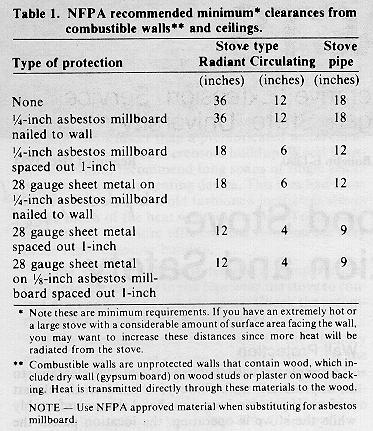

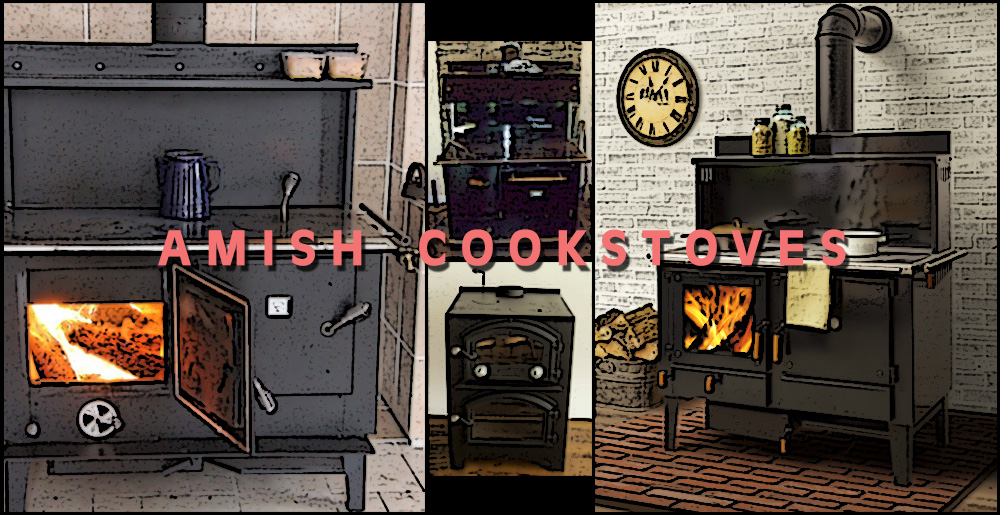
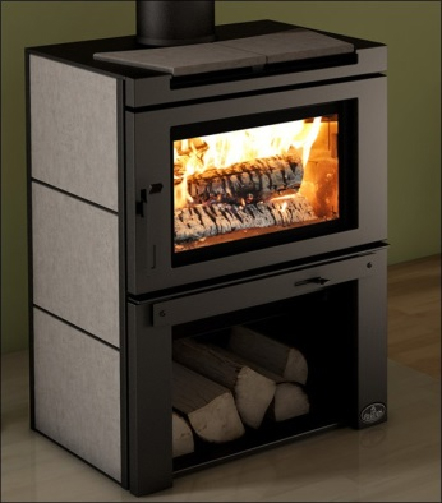
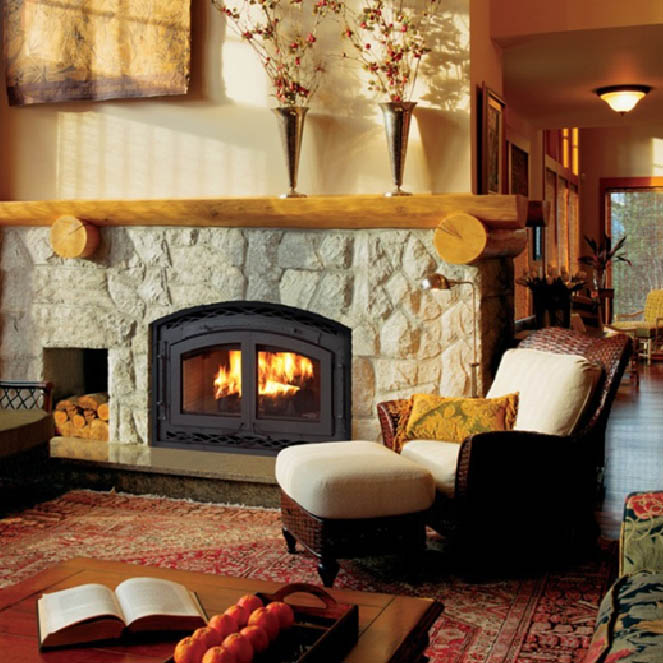
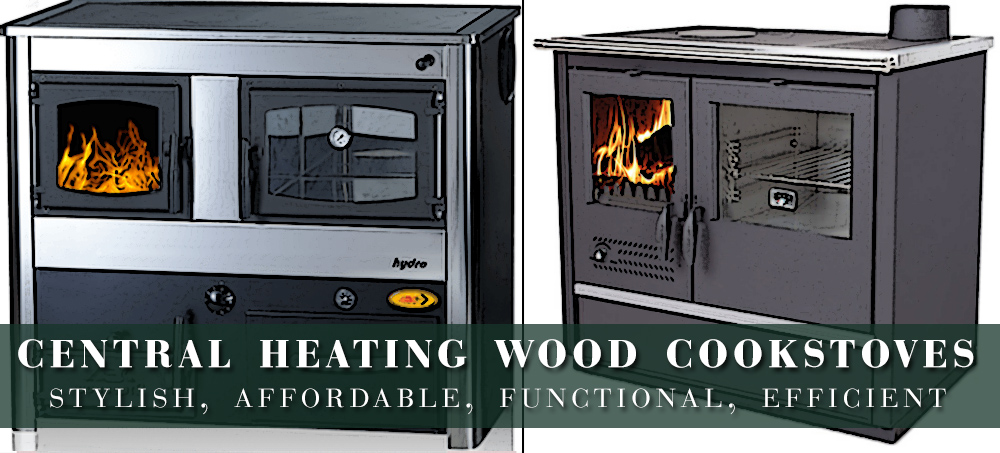
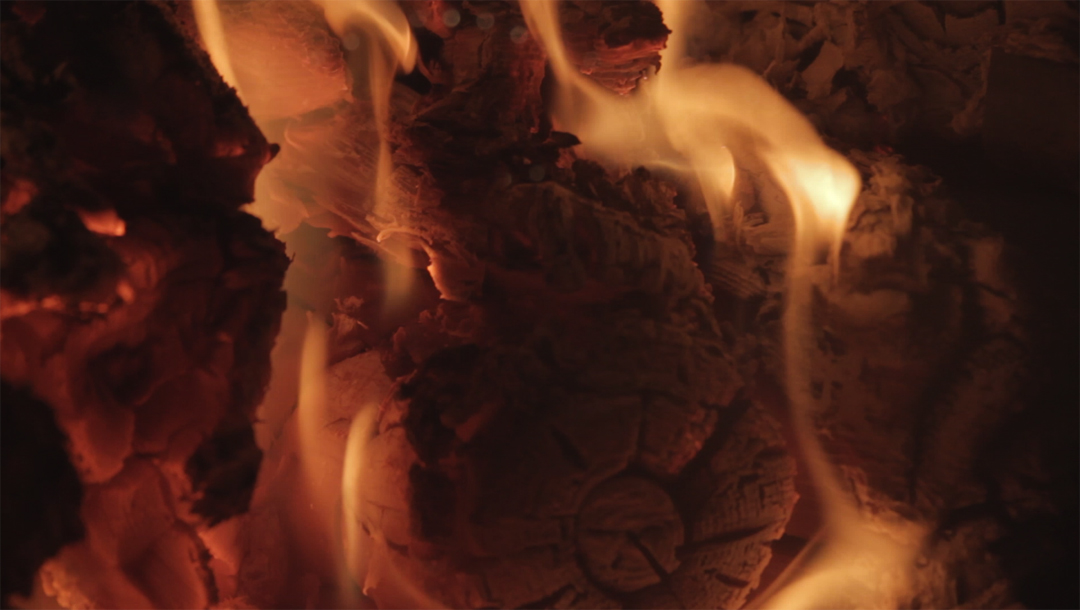
Hello, seeking help, to find King made cookstoves, someone said they are made in Canada but google isn’t producing anything to match, I’m interested in the Terrprise model I believe it’s called and pricing, any help?? “C”
Write to the email addy if you know where to find King wood burning cookstoves and pricing, guiding_guardian@hotmail.com,,,TY all. “C”
Charles,
Sorry for the delay in responding to your request. The King Cookstove I believe you are referring to was made by the enterprise fawcett manufacturing company which burned down a few years ago. These were very nice looking fancy wood cookstoves that we used to sell. As the castings were all destroyed in the fire, it was impossible for them to recover so they closed to doors and their website is also gone. Sorry for the bad news.
Hello,
We are going to hook up our Monarch cook stove and i don’t know if I need a damper or not in the chimney pipe. The stove has been in my family for years and we just moved it to our house. Neither my wife or I can remember a damper in the chimney before so am wondering if it is necessary.
Thanks for you prompt reply!! 🙂
Hello Jay! Sorry for the delay in the response. No, you do not need a damper on the chimney pipe. 🙂
Greetings Jay, let me elaborate more on chimney dampers, why they are used, and weather or not you need them. The Monarch cookstoves were like most cookstoves of that era and had built in chimney dampers, in order to work properly. When you close the chimney damper on a wood cookstove, you are forcing the hot smoke and gases out the top of the firebox over the top of the oven, just under the cook-top, down the side of the oven, under the oven, up the back over the oven and out the stack. Installing an extra chimney damper would not be a good idea.
Another place you would not want to install a chimney damper is with any EPA wood stove. They work best without them as they work buy carefully regulating how much air creates the combustion process. Messing with the draft, messes with this process too, ending up with a stove that wont work as designed.
Chimney dampers are mostly from a bygone time when woodstoves were basically a metal box that you could burn wood in. A huge advancement from an open fireplace, but at that time the word EPA did not exists in the context it does now, nor did the regulations that we have now. Pre EPA there were something like 900 small business producing woodstoves. EPA Phase ! that number dropped to less than 100. EPA Phase 2 dropped that number to less than half of those business able to keep their doors open. That’s another story, for another day.
The invention of the chimney damper was revolutionary in its day as it allowed you to be able to fine tune how much air was coming into the stove by how much draft or vacuum the chimney was placing on the stove. In homes that were 4 stories tall with masonry chimneys centrally located inside the home, could produce quite a draft on the first floor. The more draft the faster the wood would burn.
So the bottom line is unless your burning an barrel stove, an old Fisher or Shrader Woodstove, you will need a chimney damper…..otherwise, no.
If you have a overdraft problem because you have too much draft, better to reduce that draft utilizing a Biometric Damper that automatically
will regulate chimney draft for you.
I have the proper chimney pipe install and am ready to connect to the cook stove pipe. Should there be some kind of sealent in the joints?
No Rick you do not need to put sealant in the joints if they are properly crimped and fit tightly. The only products out there that can take the heat a stove pipe can get to, above 1200 degrees, are furnace cements. These dry rock hard and do not flex well. Single wall stove pipe is made from thin gage sheet metal. It will flex as it expands and contracts. The furnace cement will crack and fall out eventually. Best to make sure your joints are tight, male end down. As the stove pipe heats up the hot air rising will produce a vacuum and the air will be drawn in. Smoke cant leak out when there is a vacuum. A leaking lose pipe will result in less draft and will be prone to puff from the joints when its windy outside and the air sweeps across the top of the chimney. Any stove pipe that is leaking creosote from the seams has been installed upside down as the creosote should always remain inside the chimney as it is very flammable. Male end down will always end up with the creosote and smoke staying where they should, inside the chimney stack.